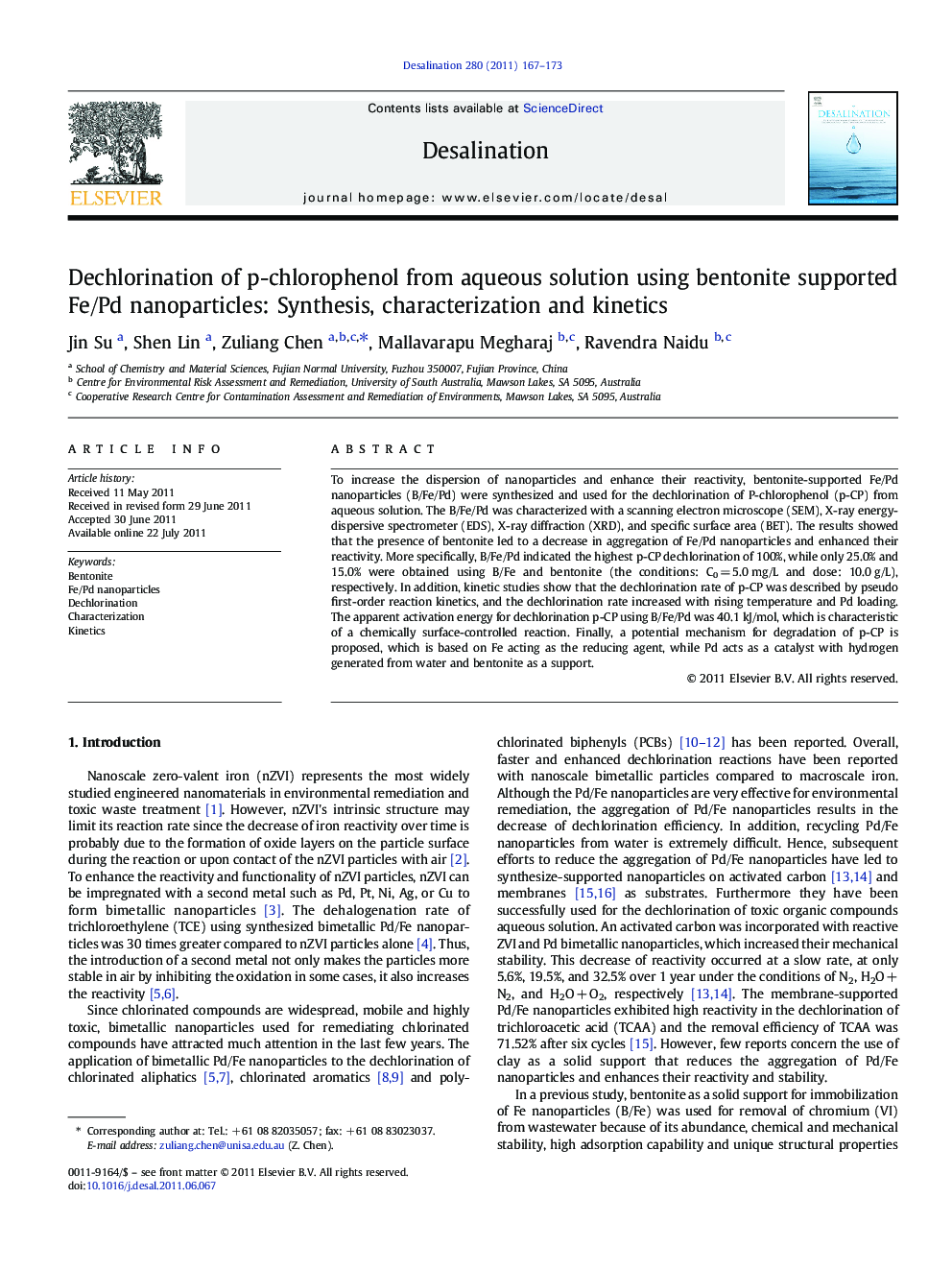| Article ID | Journal | Published Year | Pages | File Type |
|---|---|---|---|---|
| 624613 | Desalination | 2011 | 7 Pages |
To increase the dispersion of nanoparticles and enhance their reactivity, bentonite-supported Fe/Pd nanoparticles (B/Fe/Pd) were synthesized and used for the dechlorination of P-chlorophenol (p-CP) from aqueous solution. The B/Fe/Pd was characterized with a scanning electron microscope (SEM), X-ray energy-dispersive spectrometer (EDS), X-ray diffraction (XRD), and specific surface area (BET). The results showed that the presence of bentonite led to a decrease in aggregation of Fe/Pd nanoparticles and enhanced their reactivity. More specifically, B/Fe/Pd indicated the highest p-CP dechlorination of 100%, while only 25.0% and 15.0% were obtained using B/Fe and bentonite (the conditions: C0 = 5.0 mg/L and dose: 10.0 g/L), respectively. In addition, kinetic studies show that the dechlorination rate of p-CP was described by pseudo first-order reaction kinetics, and the dechlorination rate increased with rising temperature and Pd loading. The apparent activation energy for dechlorination p-CP using B/Fe/Pd was 40.1 kJ/mol, which is characteristic of a chemically surface-controlled reaction. Finally, a potential mechanism for degradation of p-CP is proposed, which is based on Fe acting as the reducing agent, while Pd acts as a catalyst with hydrogen generated from water and bentonite as a support.
Graphical abstractComparison of p-CP removal using various materials.Figure optionsDownload full-size imageDownload as PowerPoint slideHighlights► Bentonite-supported Fe/Pd (B/Fe/Pd) nanoparticles for the removal of P-chlorophenol. ► p-CP dechlorination efficiency of 100% was obtained. ► Characterizations of B/Fe/Pd were by SEM, EDS and XRD. ► A mechanism for degradation of p-CP was proposed.
